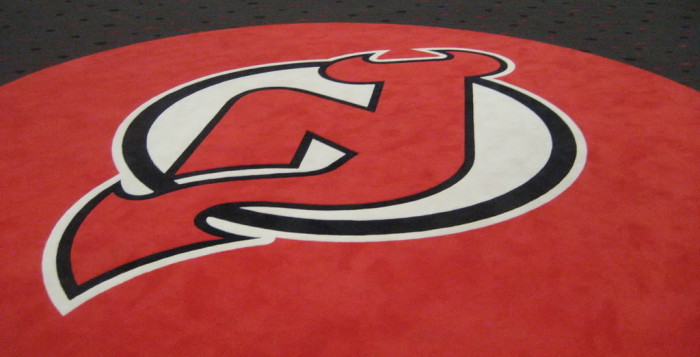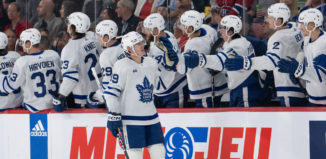Is Ray Shero the Right Choice for New Jersey?
Longevity within an organization maybe one of the hardest traits to find in professional sports these days. With the advent of free agency and television dollars, gone are the days where athletes play their entire careers for one organization, or where a coach or GM is given the opportunity to survive a couple of subpar years. But for as long as I’ve been alive (plus 8 months), Lou Lamoriello has been the President and GM of the New Jersey Devils. He was never considered a conventional GM as he stuck to his relatively conservative views: enforcing strict rules on dress code, facial hair and off-ice behavior for his players, a team philosophy of defense first and keeping a hard line when it came to negotiations for both his players’ contracts and as part of league negotiations. While his tactics were often questioned, his ability to assemble a successful team was quickly understood as he guided the Devils to three Stanley Cups. Even the Devils marketing structure under Lamoriello’s Presidential purview has had its equal share of success (see: in-arena social media hub) and limitations (see: lack of a black third jersey).
He’s always been a bit old school both on and off the ice, even since his days at Providence College, but his success quieted most critics. However, of late, as the on-ice success has tapered (save for the unexpected 2012 Stanley Cup Finals run), the questions of whether the game has finally out grown Lamoriello began to surface – accelerated by three straight years without a playoff berth. Many wondered how long the new Devils ownership would put up with him, albeit publically backing his place within the organization ‘as long as he likes’. And in true Lamoriello fashion, in a world of leaks and unnamed sources, Lamoriello was able to hire and announce his successor in the role of GM without a single person knowing until Lamoriello himself was ready to share it.
Over the last two decades, I’ve grown accustomed to the relative consistency of the Devils. Even though I couldn’t follow my favorite players on twitter, it was a willing sacrifice to know that they would rarely not be a contender for a run in the playoffs. Even with the team’s recent struggles, it was easy to chock up to the previous ownership. It wasn’t Lamoriello’s fault that Jeff Vanderbeek forced a cap-circumventing perfectly legal contract upon Lamoriello to bring in Ilya Kovalchuk. Or that the aforementioned contract cost the team the ability to re-sign Zach Parise. But after staring denial in the face after three straight years of disappointment, watching first round draft picks waste away in Albany or overseas (looking at you, Mattias Tedenby), I finally came around to the thought that perhaps the day had finally come that Lamoriello couldn’t will the NHL to conform to his structure. The Devils have fallen so far that even another round of Jacques Lemaire behind the bench wouldn’t be enough.
So enter Ray Shero. Not willing to give in completely to the world of advanced stats, Lamoriello chose a man whose last name has been around the sport as long as Lamoriello has. Many think of Shero as the architect who built the successful Pittsburgh Penguins teams that won two conference championships and a Stanley Cup. But let’s remember that the likes of Sidney Crosby, Evgeni Malkin and Marc-Andre Fleury were already in place when Shero took the reins from Craig Patrick in 2006. He helped supplement those teams to get them over the top. Even the most irrationally optimistic Devils fan can’t pretend this roster has that type of talent. Crosby and Malkin combined for 154 points this season. If you combine the Devils top 4 point getters in Adam Henrique, Mike Cammalleri, Patrik Elias and Scott Gomez, you still come up a point short of the Penguins top two forwards. Not to mention Cammalleri, Elias and Gomez are all over the age of 32. The elite goalie and the young defensemen are in place, but the Devils need a serious overhaul of their forward depth which is not something that Shero’s Penguins teams ever had an abundance of.
Last year, The Pens Blog did an analysis of Shero’s eight years’ worth of forwards draft picks as GM in Pittsburgh. From 2006-2013, Shero drafted 24 forwards. Four of those forwards made it to the NHL. And if you take out Jordan Staal’s career statistics, the other three combined for 155 games played and 47 points (as of the 2013-14 season). Over the same stretch, Lamoriello and his staff have drafted 29 forwards with 10 having made it to the NHL. Five have reached double figures in points over their combined 1,114 NHL games played, and of those, only Adam Henrique and Jacob Josefson have had lasting impressions in New Jersey. When comparing with the best drafting teams around the league (MTL, TB, DET, etc.), Lamoriello certainly isn’t something to write home about – but he’s still had more success than Shero did in Pittsburgh.
At the end of the day, it was time for change in New Jersey. The question is whether Shero can provide the help that the Devils desperately need. With an elite goalie, and a solid young defensive corps in place, the window of opportunity is ahead. The Devils are in need of a strong draft, and/or a big time trade – and are also still without a head coach. With Lamoriello staying on as President, and being the one that Shero reports to, the assumption is the Devils will continue their defensive structure but without Lamoriello at the helm, can Devils fans expect the same commitment? Does Shero provide a path to hiring Dan Bylsma as head coach? Only time will tell. Perhaps Shero can redefine himself as a draft expert, or maybe the league will cycle back to the defensive hockey that New Jersey plays. Either way, it is the end of an era, and Lou Lamoriello will always be the heart and soul of hockey in the Garden State.














